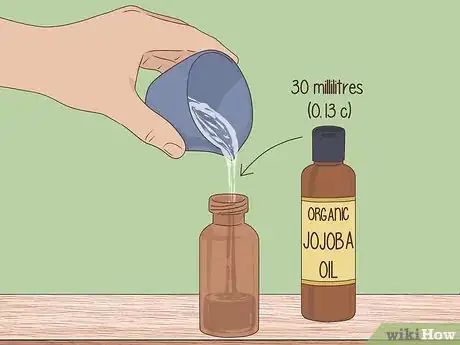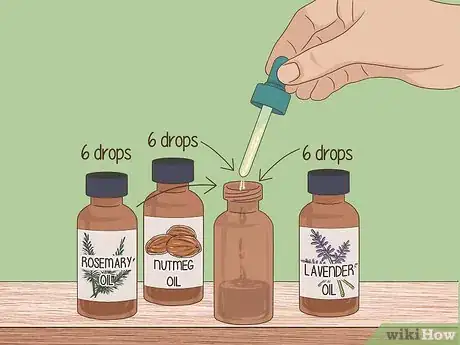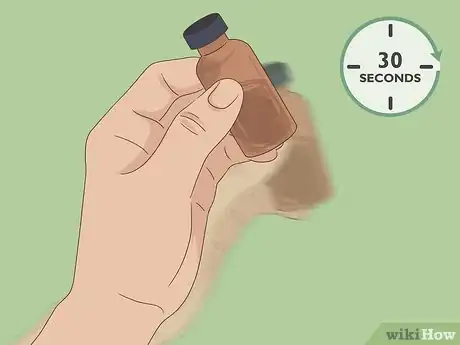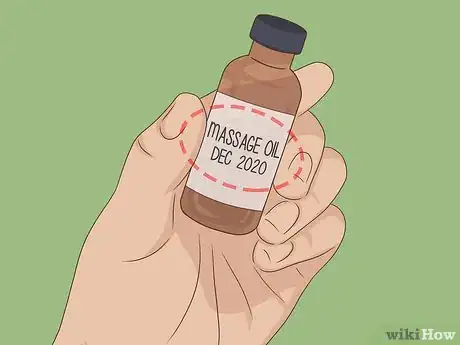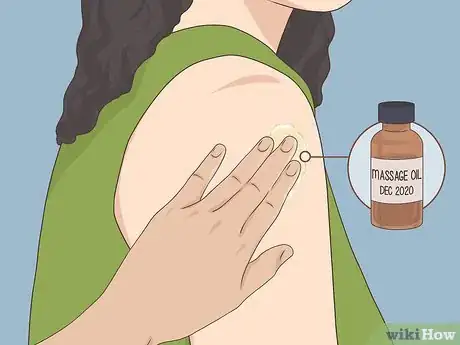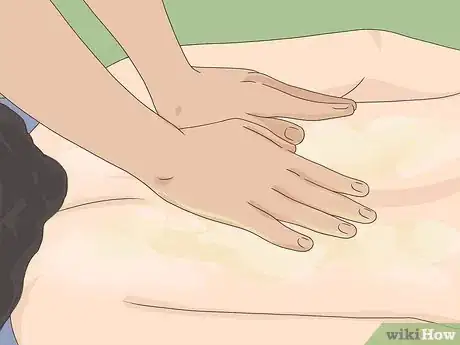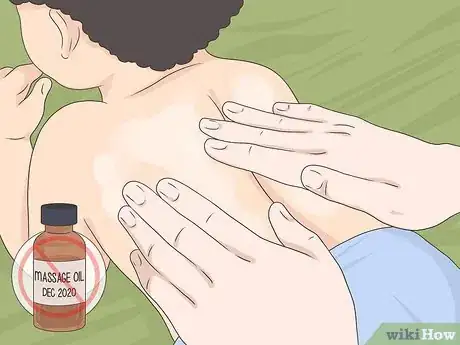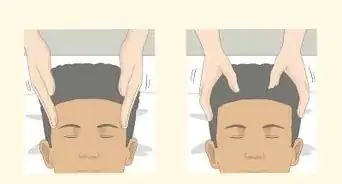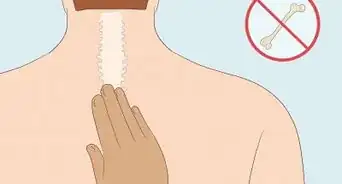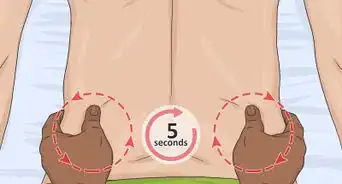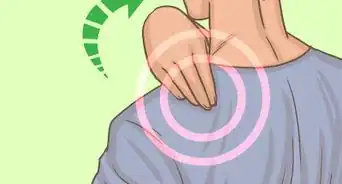This article was co-authored by Marty Morales and by wikiHow staff writer, Hannah Madden. Marty Morales is a Professional Massage Therapist and the Founder and Owner of the Morales Method, a manual therapy and body conditioning business based in the San Francisco Bay Area and in Los Angeles, California. Marty has over 16 years of massage therapist experience and over 13 years of experience educating others on the best practices for massage therapy. Marty has over 10,000 hours of private practice logged and is a Certified Advanced Rolfer and Rolf Movement Practitioner, CMT. He has an MBA in Finance from Loyola Marymount University, Los Angeles.
There are 10 references cited in this article, which can be found at the bottom of the page.
wikiHow marks an article as reader-approved once it receives enough positive feedback. In this case, 100% of readers who voted found the article helpful, earning it our reader-approved status.
This article has been viewed 355,641 times.
If you’re itching to give your loved one a massage, you may be wondering how to mix up a batch of massage oil without breaking your budget. Fortunately, you can combine a few different oils to whip up a bottle of massage oil that’s perfect for the occasion. Use caution when working with essential oils, and talk to your doctor if you have any signs of an allergic reaction.
Ingredients
Aches and Pains Massage Oil
- 30 millilitres (0.13 c) of carrier oil
- 6 drops of rosemary oil
- 6 drops of nutmeg oil
- 6 drops of lavender oil
Calming Massage Oil
- 30 millilitres (0.13 c) of carrier oil
- 5 drops of chamomile oil
- 5 drops of bergamot oil
- 5 drops of lavender oil
Foot Massage Oil
- 30 millilitres (0.13 c) of carrier oil
- 5 drops of peppermint oil
- 4 drops of lemon oil
- 4 drops of tea tree oil
- 4 drops of rosemary oil
Romantic Massage Oil
- 30 millilitres (0.13 c) of carrier oil
- 5 drops of ylang ylang oil
- 5 drops of sandalwood oil
- 5 drops of jasmine oil
Energizing Massage Oil
- 30 millilitres (0.13 c) of carrier oil
- 7 drops of ginger oil
- 6 drops of grapefruit oil
- 4 drops of juniper oil
Steps
Mixing Carrier and Essential Oils
-
1Pour 30 millilitres (0.13 c) of carrier oil into a small bottle. Carrier oil doesn’t have any smell, so it helps dilute the essential oil and rub it into your skin during a massage. Pick out a skin-safe carrier oil that you like and pour 30 millilitres (0.13 c) of it into a small bottle that has a lid. Carrier oil options include:[1]
- Grapeseed oil, which has almost no smell and absorbs into the skin well.
- Jojoba oil, which is a liquid wax that is great for sensitive skin since it isn’t a nut oil.
- Avocado oil, which penetrates deeply and is great for rejuvenating dry, sensitive skin.
- Almond oil, which is rich in vitamin A and E and is subtle enough for sensitive skin.
- Hazelnut oil, which has almost no scent so it won’t overpower other oils. It is a nut oil, so be sure not to use it on anyone with a nut allergy.[3]
- Wheat germ oil, which is high in vitamin E and can help to soothe and moisturize dry skin.
Tip: To make a larger batch of massage oil, stick with a 3% concentration of essential oils. For example, if you are using 1 c (240 mL) of carrier oil, add 1.4 teaspoons (6.9 mL) of essential oils.[2]
-
2Mix 18 drops of essential oils into the carrier oil. The blend of essential oils you choose depends on what the goal of your massage is. You can combine whatever oils you like the best with your carrier oil.[4] But try to aim for about 18 drops of essential oil total.[5]
- To relieve aches and pains, mix in 6 drops of rosemary oil, 6 drops of nutmeg oil, and 6 drops of lavender oil.
- For a calming massage, combine 5 drops of chamomile oil, 5 drops of bergamot oil, and 5 drops of lavender oil.[6]
- If you’re using your oil for a foot massage, try 5 drops of peppermint oil, 4 drops of lemon oil, 4 drops of tea tree oil, and 4 drops of rosemary oil.
- For a romantic massage, mix in 5 drops of ylang ylang oil, 5 drops of sandalwood oil, and 5 drops of jasmine oil.
- To stay alert, combine 7 drops of ginger oil, 6 drops of grapefruit oil, and 4 drops of juniper oil.
Advertisement -
3Shake the bottle for 30 seconds to combine the oils. Put the lid on your jar tightly and shake it back and forth to mix the oils together. Make sure the lid is on tight so your oils don’t leak out.[7]
- Essential oils are pretty strong. If they get on your clothes or furniture, they might end up smelling like your massage oil.
-
4Label the bottle with the scent of the oil and today's date. You may want to make multiple kinds of massage oils for different occasions, and it’s easy to get them mixed up. Put a small strip of tape on the bottle and use a permanent marker to write the name of the mixture and the date you made it.[8]
- For example, you could write “Foot Massage Oil, May 2020.”
-
5Store your oil in a cool, dry place for up to 12 months. After about 1 year, the carrier oil starts to break down and your massage oil may not smell as fresh as it used to. Try to use your oil quickly and keep it in a cool, dry place, like your kitchen pantry.[9]
- If you used grapeseed oil as your carrier oil, discard your massage oil after 6 months instead of 12. Grapeseed oil breaks down faster than other oils.
- If you want to cool down your oil to make it more soothing before a massage, put it in the fridge for 30 minutes.
- Alternatively, you can warm the oil by keeping the oil bottle in a bowl filled with warm water before the massage.[10]
- You can even use shea butter for giving a massage.[11]
Using Massage Oils Safely
-
1Do a patch test to see if you are allergic to the oil. Pick out a 2 in (5.1 cm) space on you or your partner’s arm, then swipe some of the massage oil onto the area. Leave the oil on for at least 24 hours, and check for any redness, itching, or swelling, which could indicate an allergic reaction.[12] If your skin does have a reaction, do not use the massage oil.[13]
- It is important to test every new oil on your skin, even if you’ve tested a different type of essential oil on your body before. Different oils have different substances, and you could be allergic to one oil but not the other.
-
2Keep your massage oil away from the face, genitals, and ears. Essential oils are extremely strong, and they can cause chemical burns on the thinner areas of your skin. Never use your massage oil on anyone’s face, ears, genitals, or around any open wounds.[14]
Warning: If you do accidentally get massage oil in an area that you’re not supposed to, rinse it off right away with cool water.
-
3Stay out of the sun if you apply a phototoxic oil to your skin. Bergamot, lemon, lime, orange, and angelica essential oils can all cause burns to your skin if you go out in the sun after applying them. If your massage oil mix contains any of these ingredients, be sure to warn your massage partner that they need to stay inside for the rest of the day or until they take a shower.[15]
-
4Talk to your doctor before using massage oils if you are pregnant. Essential oils do have the ability to cross the placental barrier, and there isn’t much research on how this affects the fetus. If you are pregnant or plan on becoming pregnant, do not use massage oil with essential oils in them without talking to your doctor first.[16]
- Mild essential oils, like lavender oil, may be safe to use, but you should check with your doctor first.
-
5Avoid using massage oils on babies or children. Babies and children have delicate, sensitive skin that is more susceptible to irritation. If you would like to use your massage oil on your child, talk to their doctor to see if it’s safe.[17]
- Keep your massage oils out of reach of your children when you store them.
Community Q&A
-
QuestionAny mixture you can recommend that creates a hot yet soothing and fragrant effect?
 Community AnswerCayenne can be used topically to relieve pain, kind of an icy hot feeling but without the icy. As for the fragrance, that's kind of up to you, there are lots of different essential oils with different scents.
Community AnswerCayenne can be used topically to relieve pain, kind of an icy hot feeling but without the icy. As for the fragrance, that's kind of up to you, there are lots of different essential oils with different scents.
Warnings
Things You’ll Need
Mixing Carrier and Essential Oils
- Bottle with lid
- Tape
- Permanent Marker
References
- ↑ https://www.youtube.com/watch?v=qd2qWbyzenw&feature=youtu.be&t=178
- ↑ https://www.takingcharge.csh.umn.edu/how-do-i-choose-and-use-essential-oils
- ↑ Justyna Kareta. Certified Master Massage Therapist. Expert Interview. 10 December 2019.
- ↑ Marty Morales. Professional Massage Therapist. Expert Interview. 20 December 2019.
- ↑ https://www.youtube.com/watch?v=qd2qWbyzenw&feature=youtu.be&t=214
- ↑ Justyna Kareta. Certified Master Massage Therapist. Expert Interview. 10 December 2019.
- ↑ https://www.youtube.com/watch?v=fGElBqHMA-4&feature=youtu.be&t=58
- ↑ https://www.youtube.com/watch?v=qd2qWbyzenw&feature=youtu.be&t=241
- ↑ https://achs.edu/blog/2018/03/20/do-essential-oils-have-a-shelf-life/
- ↑ Marty Morales. Professional Massage Therapist. Expert Interview. 20 December 2019.
- ↑ Marty Morales. Professional Massage Therapist. Expert Interview. 20 December 2019.
- ↑ Justyna Kareta. Certified Master Massage Therapist. Expert Interview. 10 December 2019.
- ↑ https://www.mayoclinic.org/tests-procedures/allergy-tests/about/pac-20392895
- ↑ https://www.takingcharge.csh.umn.edu/explore-healing-practices/aromatherapy/are-essential-oils-safe
- ↑ https://www.takingcharge.csh.umn.edu/explore-healing-practices/aromatherapy/are-essential-oils-safe
- ↑ https://www.takingcharge.csh.umn.edu/explore-healing-practices/aromatherapy/are-essential-oils-safe
- ↑ https://www.takingcharge.csh.umn.edu/explore-healing-practices/aromatherapy/are-essential-oils-safe
- ↑ https://www.takingcharge.csh.umn.edu/explore-healing-practices/aromatherapy/are-essential-oils-safe
- ↑ https://www.takingcharge.csh.umn.edu/explore-healing-practices/aromatherapy/are-essential-oils-safe
